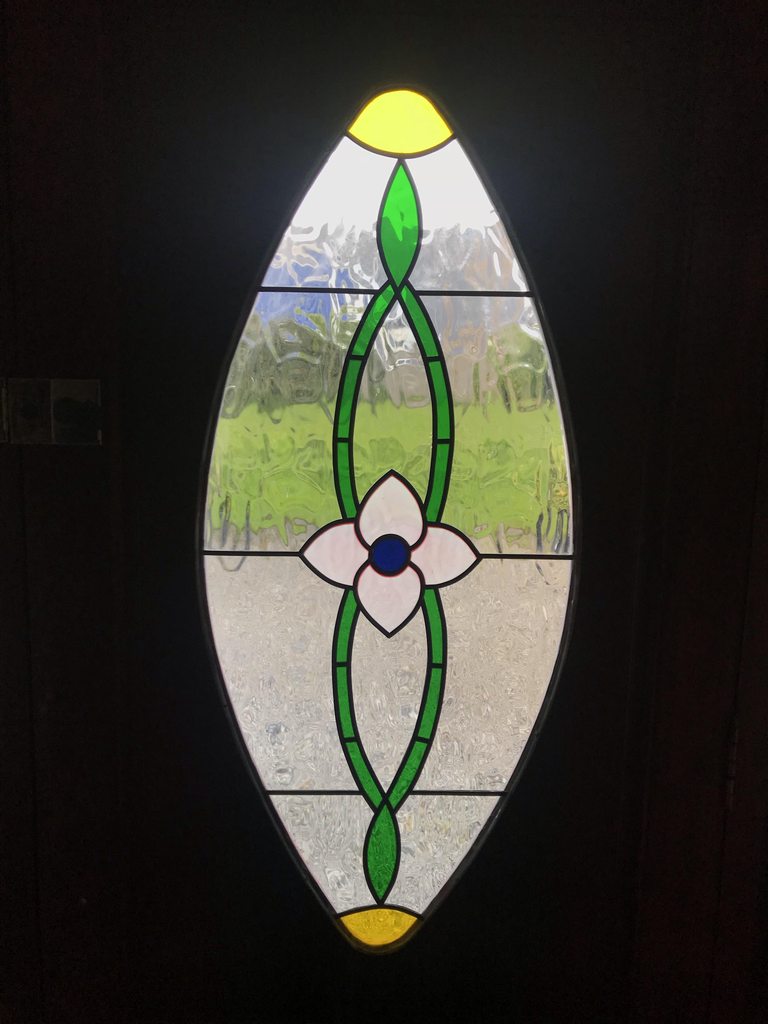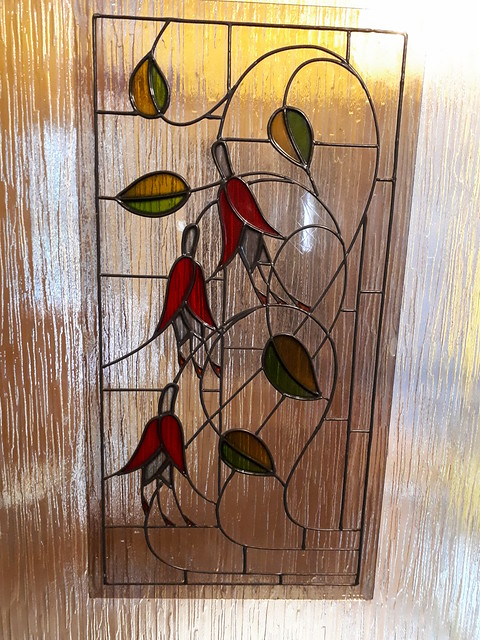-alan-
pfm Member
The front door of our house and two similarly sized wooden panels either side of it have some kind of imitation stained-glass panels in it.

The floral motif in the middle was red with a blue centre when we moved in 20 years ago, but the red has all bit disappeared. The other colours seem to have weathered slightly better. The 'lead' bits are stuck on, rather than integral frames, and the coloured bits look like they were originally either painted, or coated in a plastic film (which was done well enough so that I can't find the edges).
I'm about to paint the front door, and would like to refresh the red colour in the pattern. Was wondering if anybody as ever done something similar with some kind of paint on glass ?
If so - what kind of paint should a chap use, and is there a need to apply some kind of sealer or other protective treatment to make it last ?

The floral motif in the middle was red with a blue centre when we moved in 20 years ago, but the red has all bit disappeared. The other colours seem to have weathered slightly better. The 'lead' bits are stuck on, rather than integral frames, and the coloured bits look like they were originally either painted, or coated in a plastic film (which was done well enough so that I can't find the edges).
I'm about to paint the front door, and would like to refresh the red colour in the pattern. Was wondering if anybody as ever done something similar with some kind of paint on glass ?
If so - what kind of paint should a chap use, and is there a need to apply some kind of sealer or other protective treatment to make it last ?


